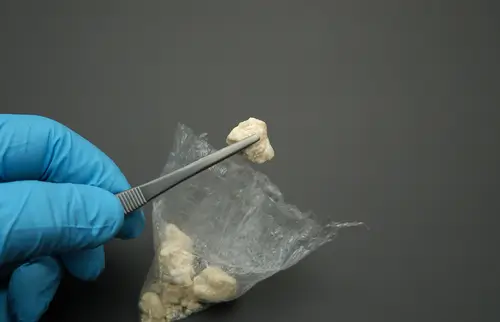Sobriety can be a complex journey, and understanding the intricacies of withdrawal, especially with substances as potent as crack cocaine, is your greatest weapon. Withdrawal, often characterized by a colorful array of symptoms, stands as one of the most significant barriers on the path to recovery.
Understanding the full scope of crack withdrawal, dissecting the nature of the substance, and its addiction symptoms is crucial. Once you understand this and the dynamics of withdrawal, combined with other forms of treatment, it can be the light on the path to recovering long-term.
What is Crack?
Before understanding what crack withdrawal is, it is crucial to understand the substance at the root of the withdrawal crisis. Understanding crack as a substance lays the groundwork for fully comprehending the complex nature of its withdrawal symptoms.
Definition and Background
Crack, also known as crack cocaine, is a freebase, smokable form of cocaine. It comes from the processing of cocaine with baking soda and water, leading to a more potent form of the drug. It is smoked to achieve a high that is both intense and short-lived.
Crack vs. Cocaine
Even though crack is a derivative of cocaine, it is more distinctive. Namely its intensity and method of use. Smoking crack leads to rapid, more intense effects because it reaches the brain faster than snorting cocaine. Crack offers a more intense high but is often short and wears off quickly.

How Addictive is Crack?
Both cocaine and crack are highly addictive – understanding why it is addictive is imperative in understanding why withdrawal from it can be complicated.
High Addictive Potential
From first use, crack is addictive and can potentially foster dependency. The roller coaster of rapid and intense effects creates a cycle of binging and crashing. This leads users to recurrent usage to maintain the same high throughout their usage history.
Neurochemical Alterations
Using crack alters the brain’s neurochemistry. It disrupts dopamine pathways and leads to changes that support addiction. The dopamine rush and subsequent depletion create a cycle of increased use and dependence.
Read more: 8 Ways To Get Through Severe Anxiety After Getting Sober

Symptoms of Crack Addiction
Identifying the signs of crack addiction can aid in timely intervention, an essential step toward recovery.
- Behavioral Changes: These include noticeable changes in behavior, including increased agitation, impulsivity, and engaging in risky behaviors to procure the drug.
- Physical Side Effects: These may include dilated pupils, weight loss, and a lack of personal hygiene.
- Psychological Side Effects: These manifestations may include paranoia, hallucinations, and a major inability to focus on tasks.
What Happens When Someone Goes Through Crack Withdrawal?
Withdrawal is an important step in beating crack addiction. It involves various symptoms that appear as the body tries to cope with the absence of crack.
- Physical Symptoms: Physical symptoms during crack withdrawal can include fatigue, increased appetite, and sleep pattern disturbances.
- Psychological Symptoms: Psychological symptoms may include increased anxiety, depression, and/or vivid, unpleasant dreams.
Duration and Intensity of Crack Withdrawal Symptoms
Withdrawal symptoms can start within hours or up to days following the last use of the drug. It may last for weeks, indicating the drug’s prevalence in the user’s body. Fully understanding what the body is about to go through when ending addiction is crucial to overcoming withdrawal symptoms, and being at peace with the fact that it will get better helps many people take the journey.
Read more: What Does Cocaine Feel Like With ADHD?

Safe Ways to Withdrawal from Crack
Quitting cold turkey is never recommended when withdrawing from crack. There are several pathways to overcoming this addiction. Finding the right program and treatment is crucial to success and long-term recovery.
- Medical Supervision: A safe withdrawal option is doing so under medical supervision. This is often offered by facilities where healthcare providers manage symptoms and ensure safety during withdrawal.
- Detoxification Programs: Structured detoxification programs offer a safe environment for individuals to navigate withdrawal symptoms with support and guidance.
- Medication-Assisted Treatment: Medication-assisted treatment (MAT) might be used to alleviate withdrawal symptoms, providing you with less intense symptoms as the drug leaves your system.
Let Launch Centers Help You with Crack Withdrawal
The journey to sobriety doesn’t have to be long and lonely – not when Launch Centers is here to help. Each hurdle you face can be overcome with the help of our skilled professionals, our nurturing community, and with the support of staff that understands what it means to withdraw from an abused substance.
If you or a loved one are using crack, or you notice the symptoms of crack withdrawal, know there is help for you. Launch Centers provides a holistic approach to managing withdrawal symptoms. We believe in making the experience as easy as possible and facilitating long-term recovery through our therapeutic programs.
Let Launch Centers be your partner in this journey, guiding you with expertise and compassion as you reclaim control over your life. Reach out today to learn more about our crack withdrawal programs and to find out what options are available to help you lead a happier, healthier, and drug-free life.





